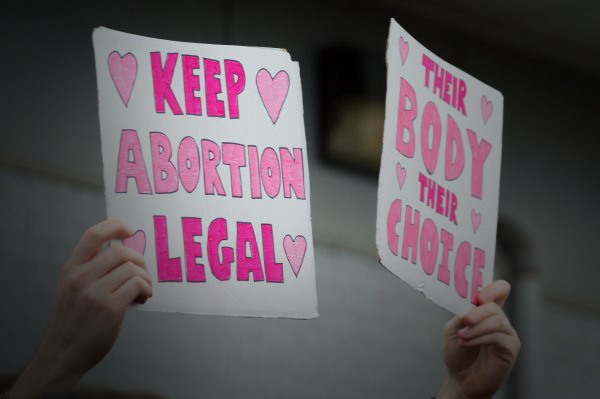Abortion rights, women of color, and LGBTQIA+ people are under attack. Pledge to join us in fighting for gender justice.
Women’s Economic Security and the Importance of Roe

This week marks the forty-third anniversary of the Supreme Court decision in Roe v. Wade, recognizing the constitutional right to decide whether to have an abortion. Forty-three years of access to safe and legal abortion has furthered women’s equality and opportunity by leaps and bounds. But as we pause to reflect on Roe and celebrate everything that it has done for women, we cannot ignore the hard truth—people want to take it away, working tirelessly to chip away at Roe by making it harder and harder to access abortion. These efforts don’t just hurt women’s health; they threaten women’s economic security.
The women hardest hit by abortion restrictions are often already economically vulnerable.
 Women who have abortions are already disproportionately poor. More than 42% live below the poverty line [PDF], and most are already mothers. For a single mom of one, that means a household income of only $1,360 a month or less.
Women who have abortions are already disproportionately poor. More than 42% live below the poverty line [PDF], and most are already mothers. For a single mom of one, that means a household income of only $1,360 a month or less.- Many work in low-wage jobs and in part-time positions. A single mom making a minimum wage of $7.25 an hour has to work approximately 43 hours a week simply to remain near the poverty line.
For these women, trying to deal with the additional burdens imposed by abortion restrictions can be devastating.
- In states where restrictions have forced clinics to shutter, just getting to a clinic that is hundreds of miles away may be cost prohibitive. In Texas, where more than half of the state’s clinics have closed as a result of abortion restrictions, a woman living in Fort Stockton has to travel hundreds of miles to the nearest clinic in San Antonio. The bus ticket alone will cost her between $120 and $200 round trip.
- Plus there are other costs- like hotel expenses, child care, and lost wages from time-off work. The numbers add up quickly.
- Women working in low-wage jobs may have difficultly scheduling enough time-off work for an appointment. For the woman traveling the eleven hours roundtrip from Fort Stockton to San Antonio, asking for enough time off of work may cost her the job.
These costs further entrench economic instability for women struggling to make ends meet. Many are priced out of exercising their right to an abortion altogether. And this lack of access threatens women’s economic security and opportunity in a range of ways.
Deciding whether and when to have a child is a decision of enormous economic consequence. In part because children are really expensive [PDF] and in part because women with children face a staggering number of hurdles, including the high healthcare costs of pregnancy and child birth [PDF], pregnancy discrimination, unfair scheduling practices [PDF], caregiver discrimination, and unaffordable childcare [PDF]. It’s a depressing list (and it’s not even exhaustive). It’s therefore unsurprising that denying women the ability to make this decision has long term consequences for economic stability and opportunity.
- Students who give birth are much less likely to earn their degree [PDF]. One-third of all female drop outs said becoming a parent was a major factor in leaving school [PDF].
- Forty-one percent of working mothers report that being a parent has negatively impacted their ability to advance in their jobs [PDF].
- Having a child creates an immediate drop in earnings [PDF] and long-term drop in a woman’s lifetime earning trajectory.
- One year after seeking an abortion, women denied an abortion were worse off financially than women who were able to access the care they wanted.
“The ability of women to participate equally in the economic and social life of the Nation has been facilitated by their ability to control their reproductive lives.” It’s one those Supreme Court quotes advocates like to repeat over and over. But that isn’t because it sounds good. It’s because it’s true. So this year, in honor of Roe let’s renew our efforts to make sure women maintain that control over their reproductive decisions and their economic future.




